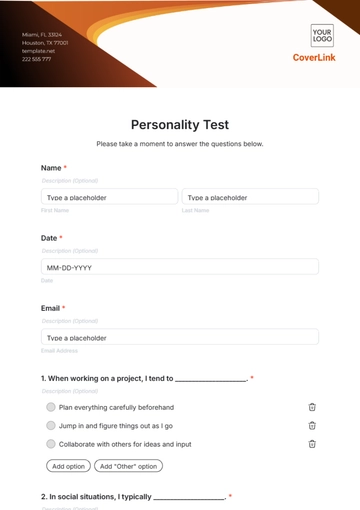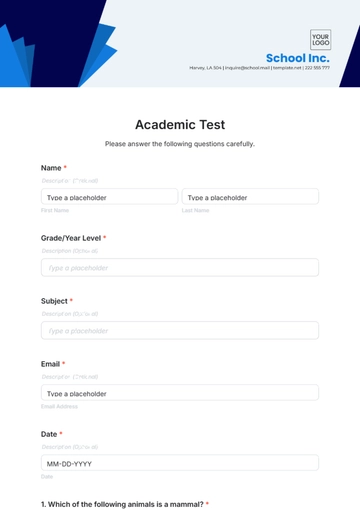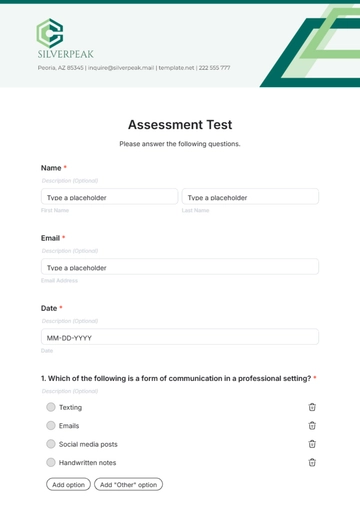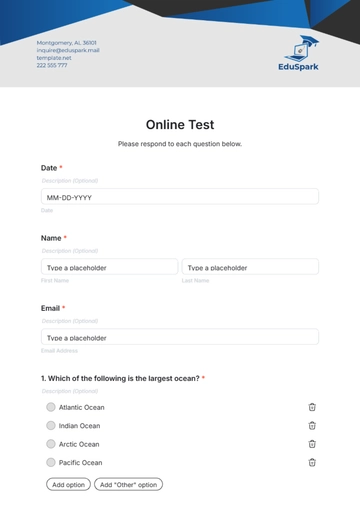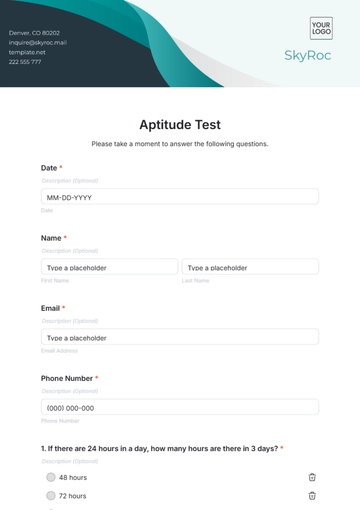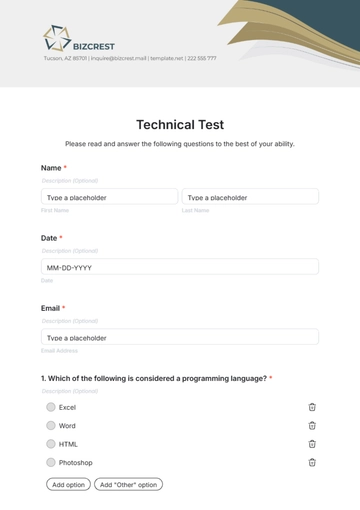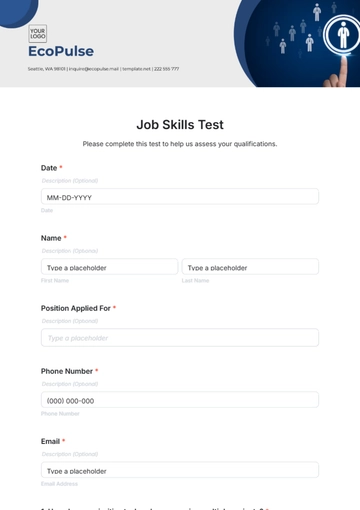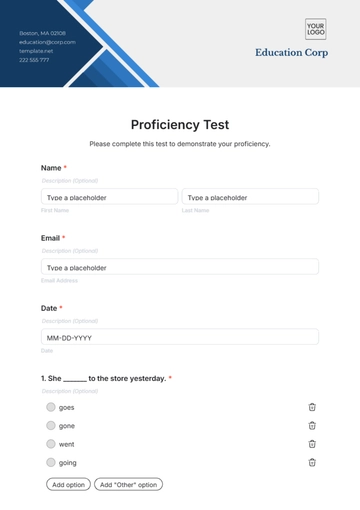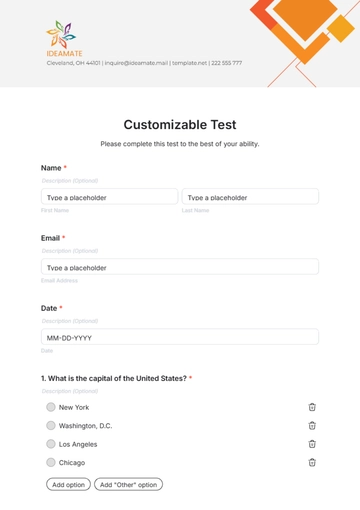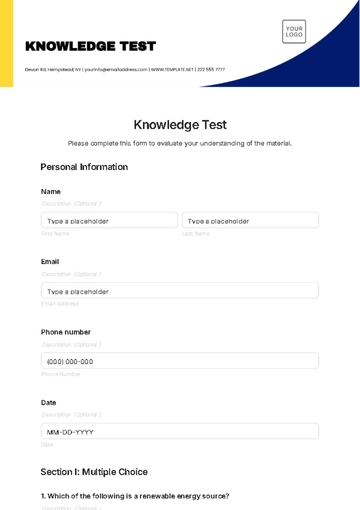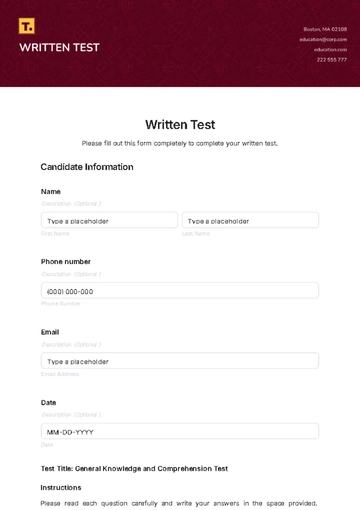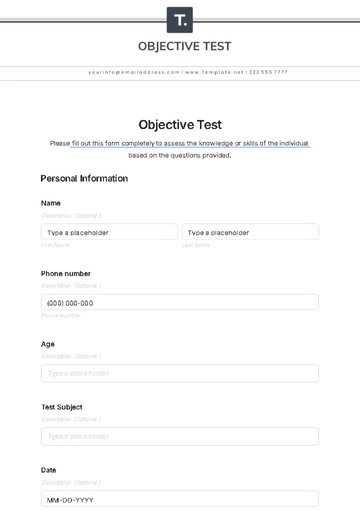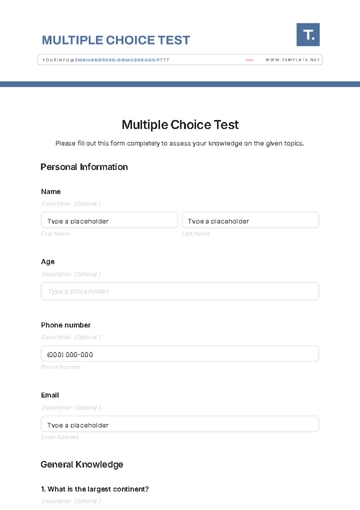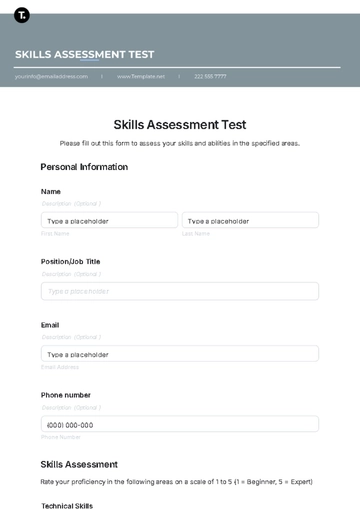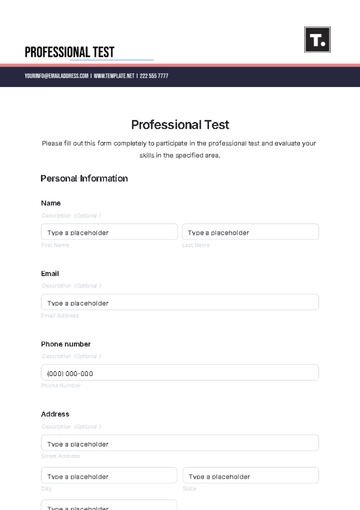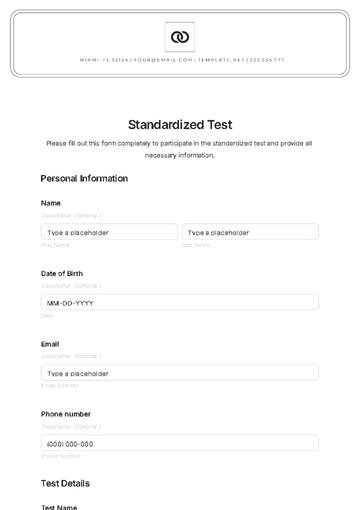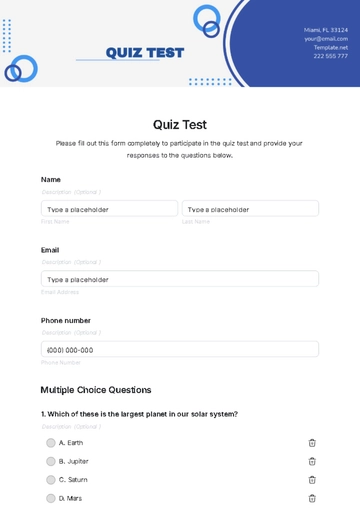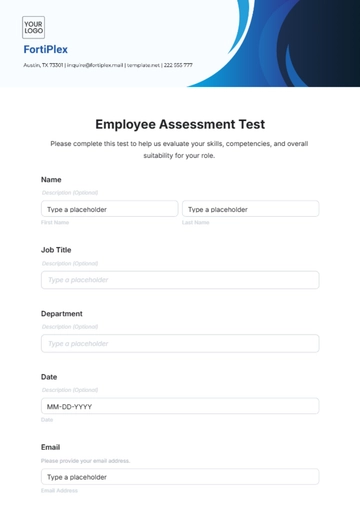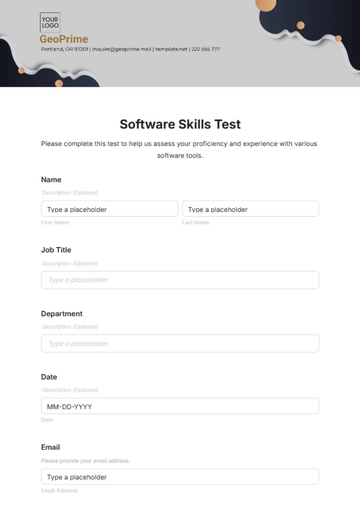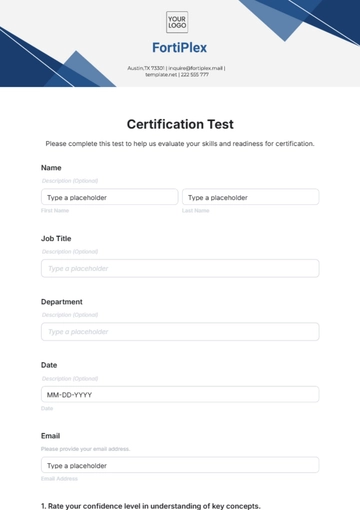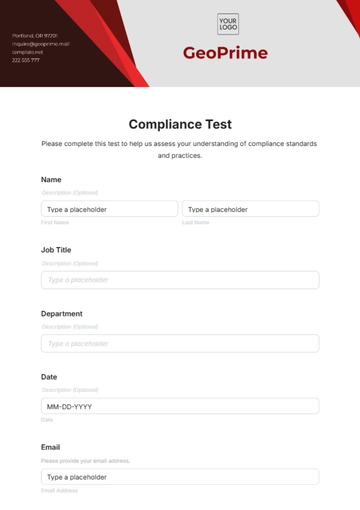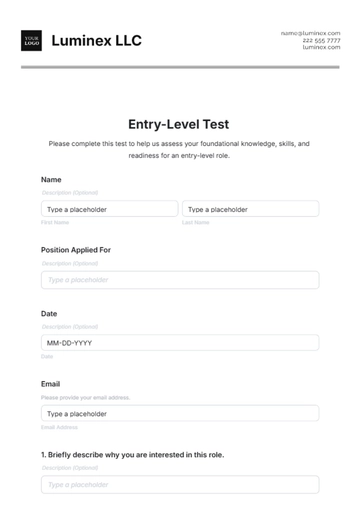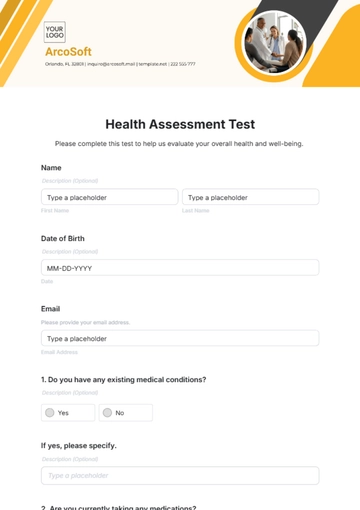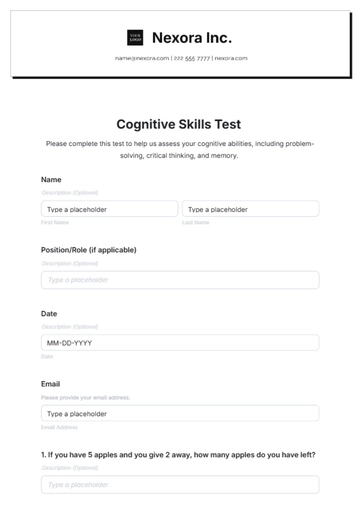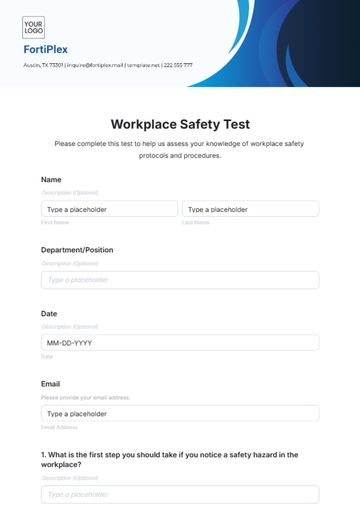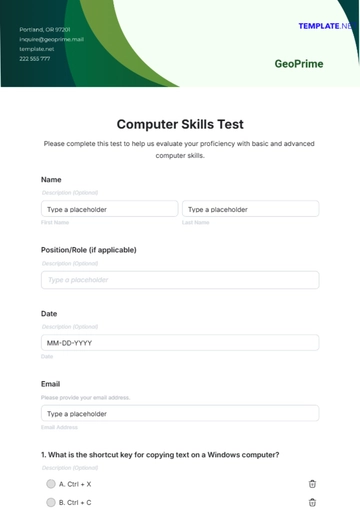Free Personality Test Outline HR
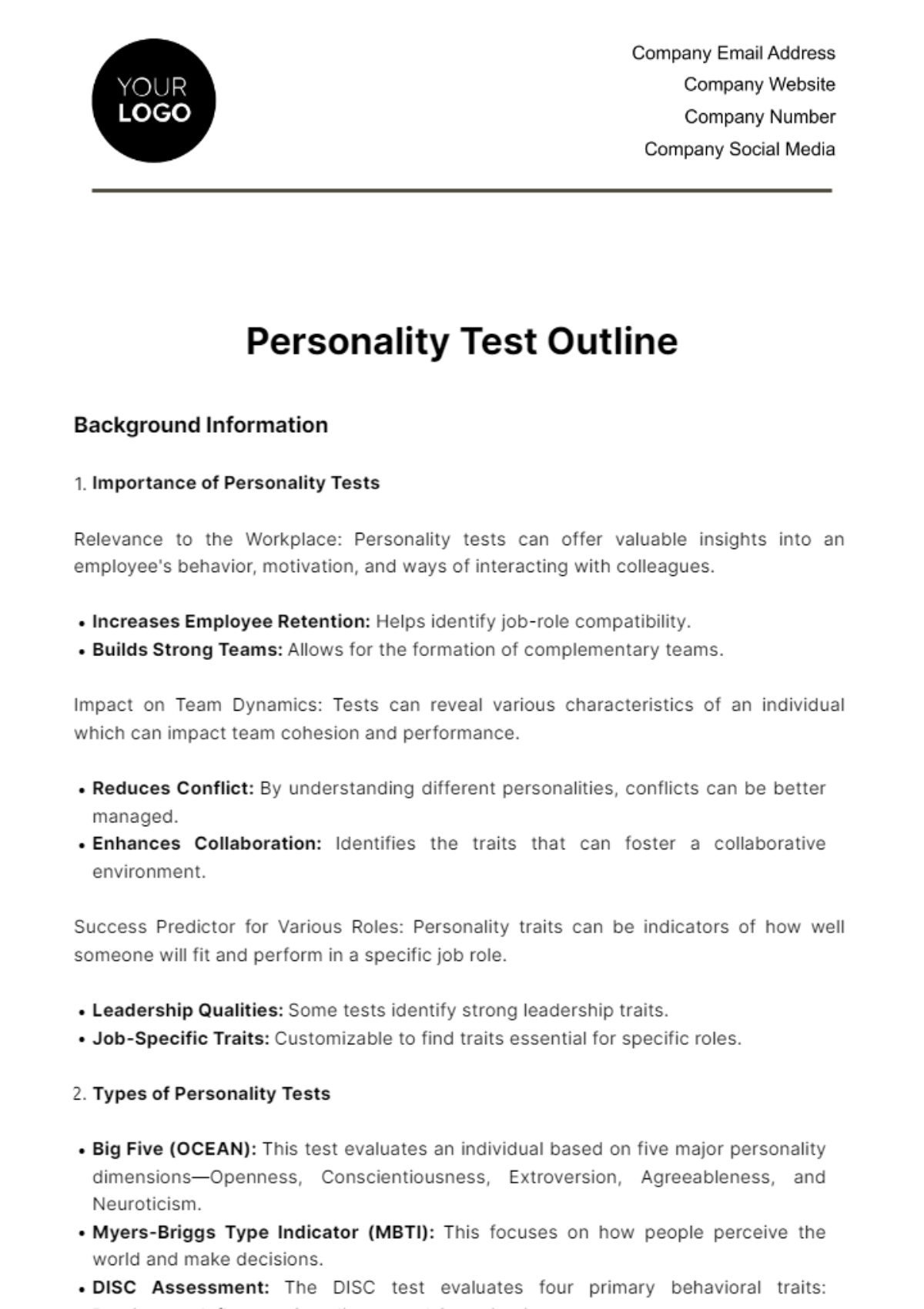
Background Information
Importance of Personality Tests
Relevance to the Workplace: Personality tests can offer valuable insights into an employee's behavior, motivation, and ways of interacting with colleagues.
Increases Employee Retention: Helps identify job-role compatibility.
Builds Strong Teams: Allows for the formation of complementary teams.
Impact on Team Dynamics: Tests can reveal various characteristics of an individual which can impact team cohesion and performance.
Reduces Conflict: By understanding different personalities, conflicts can be better managed.
Enhances Collaboration: Identifies the traits that can foster a collaborative environment.
Success Predictor for Various Roles: Personality traits can be indicators of how well someone will fit and perform in a specific job role.
Leadership Qualities: Some tests identify strong leadership traits.
Job-Specific Traits: Customizable to find traits essential for specific roles.
Types of Personality Tests
Big Five (OCEAN): This test evaluates an individual based on five major personality dimensions—Openness, Conscientiousness, Extroversion, Agreeableness, and Neuroticism.
Myers-Briggs Type Indicator (MBTI): This focuses on how people perceive the world and make decisions.
DISC Assessment: The DISC test evaluates four primary behavioral traits: Dominance, Influence, Steadiness, and Conscientiousness.
Type of Test | Description | Duration | Cost Range | Best For |
Big Five | Evaluates five primary personality traits | 30-40 min | $10-$50 | Broad Personality Overview |
Legal Considerations
Anti-discrimination Laws: Ensure the test does not discriminate based on age, race, gender, disability, or any other protected category.
Informed Consent: Each test-taker must be adequately informed about the purpose and nature of the test.
Data Protection Regulations: The company must comply with data protection laws, such as GDPR, when storing and using test data.
Preparation Phase
Define Objectives
Job Fit: Determine the qualities that are essential for specific roles within the organization. Example: A sales role may require a high level of extroversion.
Team Compatibility: The aim here is to find out how well an individual will fit into an existing team. Consider existing team dynamics and gaps in personality traits that need to be filled.
Leadership Potential: Identify employees who have the characteristics to be effective leaders. Focus on traits like decision-making skills, emotional intelligence, and motivation.
Selecting the Right Test
Matching Tests to Objectives: Choose a test that aligns with the defined objectives. For example, use the Big Five for a broad personality overview and DISC for leadership analysis.
Pilot Testing: Before rolling it out company-wide, administer the test to a small group to gauge its effectiveness.
Consultation with Experts: Consult with organizational psychologists to ensure that the selected test is suitable for your objectives.
Budget and Resources
Costing: Include costs of the test itself, as well as costs for administration and analysis.
Timing: Plan when the tests will be administered to avoid clashes with other organizational events.
Required Personnel: Identify who will administer, proctor, and evaluate the tests.
Test Administration
Test Environment
Physical Space: Ensure the room is quiet and well-lit to allow maximum concentration.
Online Platforms: Choose secure and reliable platforms for online testing.
Accessibility: Make sure the test is accessible to everyone, including those with disabilities.
Instructions
Written Guidelines: Distribute these in advance to prepare test-takers.
Verbal Briefing: Conduct a brief session prior to the test to address any concerns or questions.
Answering Queries: Keep channels of communication open before, during, and after the test for any inquiries.
Proctoring
On-site Proctoring: If the test is administered on-site, make sure to have a proctor present.
Remote Proctoring: Use specialized software for remote monitoring if the test is online.
Anti-cheating Measures: Use technologies like AI-driven behavior analysis for fair assessment.
Scoring and Interpretation
Scoring Models
Raw Scores: The most basic form of score, which requires further interpretation.
Percentiles: Shows how the test-taker scored relative to a larger group.
Standard Scores: Transforms the raw score into a common scale for easier interpretation.
Reliability and Validity
Internal Consistency: Measures how well the test items contribute to the construct being measured.
Test-retest Reliability: Examines the test's consistency over time.
Face Validity: Ensures the test appears to measure what it is supposed to measure.
Data Storage
Secure Databases: Store all test results in encrypted databases.
Data Retention Policies: Establish how long the test data will be stored.
Access Control: Limit who has access to this sensitive data.
Post-Test Actions
Feedback Sessions
Individual Sessions: One-on-one meetings to discuss individual results.
Team-based Sessions: Discussions focused on the collective team dynamics.
Management Briefing: A session with management to discuss how to best utilize the data.
Data Utilization
Role Assignments: Use the data to assign individuals to roles where they will excel.
Career Development: Incorporate the results into career development plans.
Conflict Resolution: Use personality insights to address and mitigate conflicts.
Retesting Policies
Timeframe: Establish when retesting is appropriate.
Conditions for Retesting: Define scenarios where retesting might be needed. Example: After significant organizational changes or team restructuring.
Cost Implications: Budget for the retesting process.
Appendices
Sample Personality Tests
Big Five (OCEAN) Sample Questions
Openness | |
I am open to new experiences. | |
Strongly Disagree | |
Disagree | |
Neutral | |
Agree | |
Strongly Agree | |
Conscientiousness | |
I am always prepared. | |
Strongly Disagree | |
Disagree | |
Neutral | |
Agree | |
Strongly Agree | |
Extroversion | |
I am the life of the party. | |
Strongly Disagree | |
Disagree | |
Neutral | |
Agree | |
Strongly Agree | |
Myers-Briggs Type Indicator (MBTI) Sample Questions
Perception | |
When making a decision, I rely more on logic than feelings. | |
Yes | |
No | |
Judging | |
I prefer to have a detailed plan rather than going with the flow. | |
Yes | |
No | |
DISC Assessment Sample Questions
Dominance | |
I enjoy taking charge of situations. | |
Rarely | |
Sometimes | |
Often | |
Influence | |
I am good at persuading others. | |
Rarely | |
Sometimes | |
Often | |
FAQ
|
No, participation is voluntary but highly encouraged for better team dynamics and role assignments. |
|
|
Glossary
Raw Scores: The initial scores obtained from the test, prior to any statistical processing.
Percentiles: A statistical measure that indicates what percentage of the test-taking population scored lower than you.
Face Validity: The extent to which a test appears to measure what it claims to measure.
Conclusion
Summary of Steps
Preparation Phase: Define objectives, select the right test, and allocate budget and resources.
Test Administration: Set up the test environment, provide instructions, and ensure proper proctoring.
Scoring and Interpretation: Calculate scores and assess the reliability and validity of the test.
Post-Test Actions: Conduct feedback sessions, utilize data for role assignments, and establish retesting policies.
Recommendations
Regularly update the test questions to align with current organizational needs.
Consider incorporating AI-driven analysis for more accurate results.
Future Directions
Explore the possibility of incorporating new types of personality tests.
Evaluate the effectiveness of the testing process annually and make necessary adjustments.
- 100% Customizable, free editor
- Access 1 Million+ Templates, photo’s & graphics
- Download or share as a template
- Click and replace photos, graphics, text, backgrounds
- Resize, crop, AI write & more
- Access advanced editor
Discover the Personality Test Outline HR Template from Template.net, a customizable and editable tool designed to streamline your human resources processes. With the convenience of our Ai Editor Tool, this template allows for effortless modifications, ensuring a perfect fit for your company's unique needs. Experience seamless HR management today!
